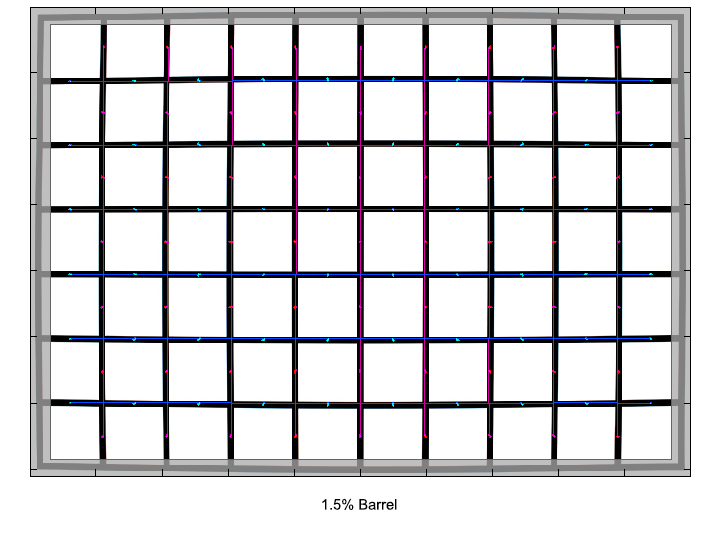|
Page 2 of 3

Distortion
There is a moderate amount of barrel distortion of around 1.5%, with a slight tendency of "stretched" borders, so the distortion is not totally uniform. In summary, this is not something to rave about, but also nothing to cry about either.

The chart above has a real-world size of about 120x80cm.
Vignetting
Fast primes are expected to show some vignetting, especially at large aperture settings. Still, the huge amount of light fall-off of the Af-S 35 at f/1.8 is a little surprising. With more than 2 EV (f-stops) at the image borders, the vignetting will clearly be visible in the image. This is probably a result of the rather small diameter of the front lens.
However, as usual, stopping down reduces the issue considerably. At f/2.8 the amount of vignetting is already below 1 EV, and from f/4 on it should no longer be an issue for most subjects.
We're performing our vignetting analysis based on
(uncorrected) JPEGs straight from the camera. The JPG engine of the Nikon D3x features a rather flat
gradation curve, thus has a moderate contrast characteristic, resulting in comparatively low vignetting figures - the
corresponding Canon figures are roughly 40% higher due to the more
aggressive default contrast setting.

MTF (resolution)
The lens delivers very solid performance in our MTF measurements. Wide open, the sharpness is on a very good level across the frame. Slightly stopped down, the resolution in the image center increases to excellent values and stays on a very high level until diffraction kicks in at small aperture settings.
The borders and corners take a little longer to reach a similarly high level. The performance peak is reached at f/5.6 with excellent resolution across the whole frame.
It is worth mentioning that the lens showed no visible focus shifting when stopping down (residual spherical aberration).
Please note that the MTF results are not directly comparable across the different systems!
Below is a simplified summary of the formal findings. The chart shows line widths
per picture height (LW/PH) which can be taken as a measure for sharpness.
If you want to know more about the MTF50 figures you may check out the corresponding
Imatest Explanations

Chromatic Aberrations (CAs)
Chromatic aberrations (color shadows at harsh contrast transitions) are fairly well controlled with an amount of 0.7 pixels at the image borders at f/1.8, increasing to 1 to 1.1 pixels for the rest of the tested aperture range.

Bokeh
One of the advantages of a large aperture is the ability to seperate the main subject in an image from its background. In such a shot, the quality of out-of-focus blur can be important.
Good news first: the bokeh quality of subjects in front of the focal plane, so rather close to the camera, is very smooth. However, that's not something you will often have the chance to appreciate with a wide-angle lens.
Unfortunately, behind the focal plane things look a little different. The image blur isn't really smooth and looks quite nervous, both in the transition zone between in-focus and out-of-focus subjects as well as far behind the focal plane.
Background highlights are evenly distributed and show an average amount of boekh fringing (see next section) with only minor outlining. However, even though the aperture blades are rounded, they no longer produce a perfect circle at medium aperture settings - which can be seen in the shape of the highlights.

Bokeh Fringing
Bokeh fringing is a common issue with relatively fast glass. It's visible as halos of different colors in out-of-focus areas - magenta (red + blue) in front of the focus point
and green beyond.
Typical for most fast primes, the AF-S 35 shows noticeable bokeh fringing at large aperture settings, which can of course be reduced by stopping down.
In addition, these shots also illustrate that there is no visible focus shifting when stopping down.
|